I’ve also highlighted where I think the waterwheel must have stood, below the outlet from the small reservoir.
All traces of the paint mill have long vanished, but it’s still possible to see the small reservoir, as well as the mill lade – a small channel dug along the hillside which collected water to feed the reservoir.
She could not remember the mill being worked, but she recalled the many occasions she had climbed the stone steps – which are still there – to watch the waterwheel.
It rekindled my interest in finding out more about the waterwheel. I first read about it in a newspaper article about a similar walk through the Goyt Valley by Horace Weir and his friend Strephon at the end of the 19th century (click to view). Even at that time, the wheel was described as ‘rusting and rotting’. But it was the size of the wheel that really surprised me;
Near to the cottages is a rusting and rotting wheel, reputed to be the next largest in the world to that Lanxcy, in Manxland This mammoth turbine in Goyt’s Clough is understood to have been used for the scouring of the stone, and it appears that the flags were conveyed by pack horse to Leek, through which ran the nearest highway to London.
But whatever the truth, it still must have posed an impressive sight, beside a narrow lane in this remote part of the Derbyshire/Cheshire countryside. The description about the Laxey waterwheel reads;
The Laxey Wheel (also known as Lady Isabella) is a large waterwheel built in the village of Laxey in the Isle of Man. Designed by Robert Casement, it has a 72-foot-6-inch (22.1 m) diameter, is 6 feet (1.83 m) wide and revolves at approximately three revolutions per minute.
It was built in 1854 to pump water from the mineshafts and named “Lady Isabella” after the wife of Lieutenant Governor Charles Hope who was the island’s governor at that time.
The Laxey Wheel is the largest working waterwheel in the world. The wheel was used to pump water from the Glen Mooar part of the ‘Great Laxey Mines’ industrial complex.
If the Goytsclough waterwheel was as large as it seems, it must also have been a breastshot type. To work out the approximate height of the wheel, I’m going to have to try and figure a way of measuring the drop from the top reservoir at Goytsclough to the ground.
From my school days, I seem to remember that there’s a way of calculating it from looking along the sloping side of triangle. But perhaps I’ll try dangling a length of rope over the edge first as maths was never my strongest subject!
Horace Wier suggested that the wheel was used to scour stone taken from the nearby quarry. But I think it’s more likely that it was used to crush stone and extract the mineral baryte which was used in the manufacture of paint. There’s an example of a stone crusher in the nearby quarry at Tegg’s Nose. I’ll take a photo next time I’m next passing by.
According to Gerald Hancock, the paint mill closed sometime around 1890 (click here for more information). It’s odd that I haven’t been able to find out much more on the waterwheel, given that it was supposed to be the second largest in the world. But I’ll update this page if anything comes to light.
In the meantime, if anyone can work out the height from the reservoir outlet to the ground, or can suggest an easy way of calculating it, please get in touch, or leave a comment below.
Page update #1
Many of my assumptions about the waterwheel proved incorrect! Click here to read of a visit to Goytsclough in 1857 which includes some fascinating detail about both the paint mill and the giant waterwheel.
Page update #2
My thanks to a fellow walker – whose name I’m afraid I managed to lose – who helped me make a very rough calculation of the distance from the millpond to the ground. She was five feet three tall. So I reckon the distance is around 22 feet.
In the subsequent post, a writer in 1857 said the waterwheel measured 36 feet in diameter. Also that it was an overshot rather than breastshot type.
If that’s correct, the bottom of the wheel must have been some 14 feet below the ground surface. Which seems unlikely. So either my calculations are way out, or perhaps the writer had got his facts wrong.
Page update #3: 24 November 2022
Chris recently came across a typewritten note in records held at Whaley Bridge Library which suggests that the waterwheel may have been a staggering 60 feet in diameter (click to enlarge).
The paper is headed ‘Particulars of Sale of Freehold Property January 1832’ and must have been copied from another document (perhaps the original) by Mr J (Jim) Brocklehurst of Madscar Farm. He adds an intriguing note at the end: “See my notes on book extracts page 10: i.e. a write up from Derbyshire Life on this waterwheel”.
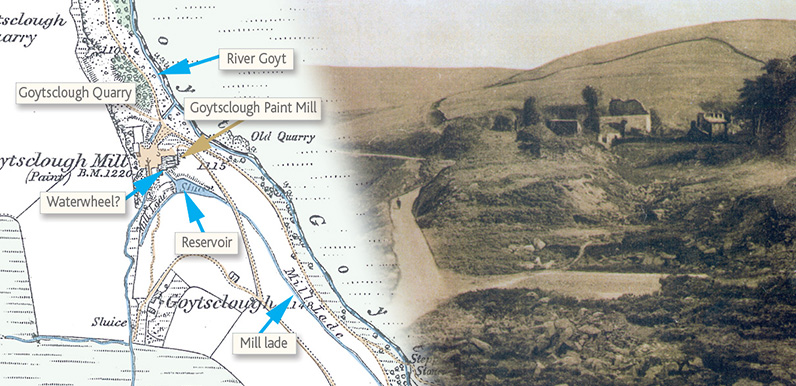
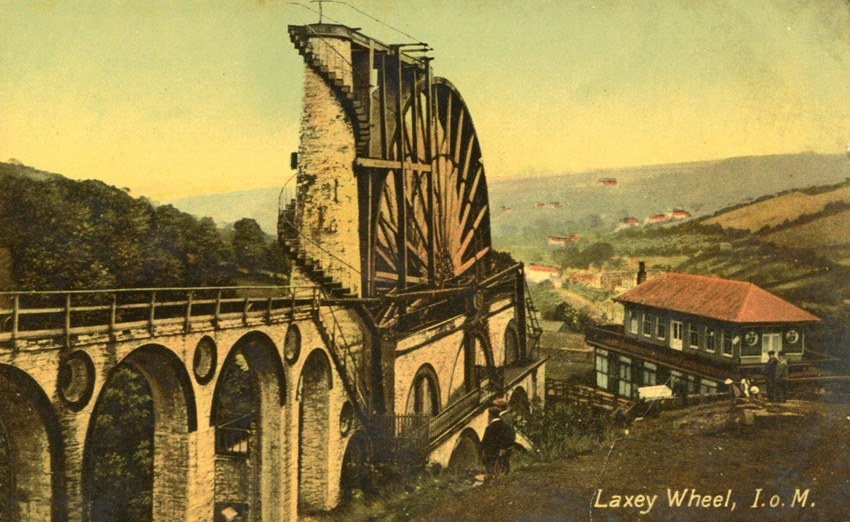
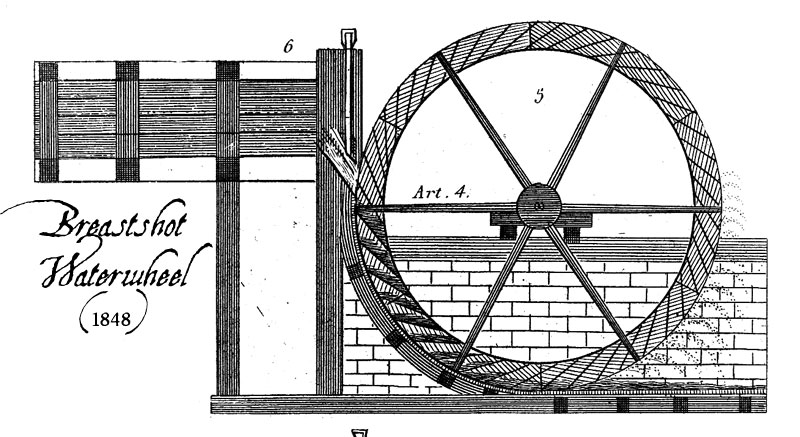
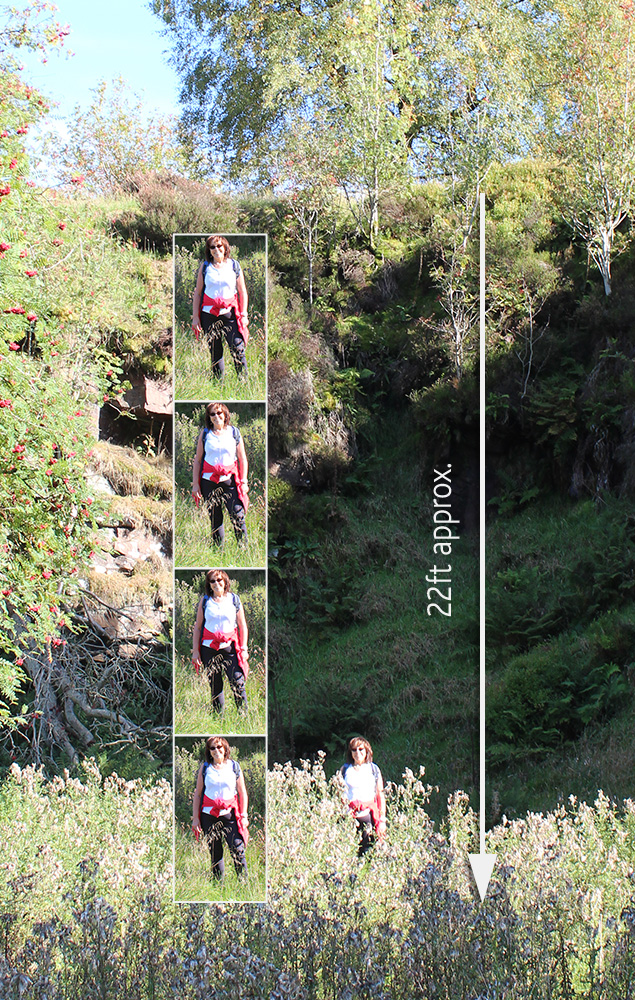
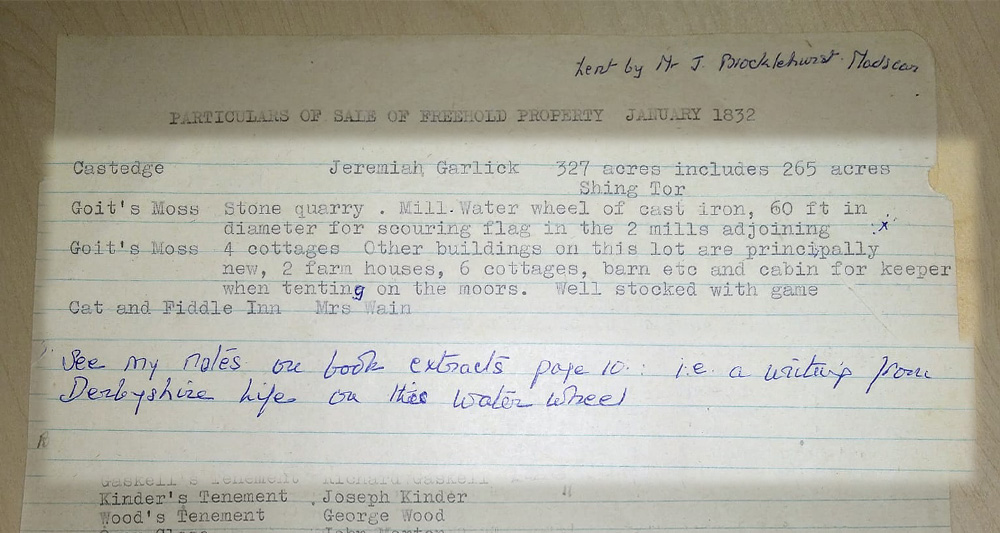

The waterwheel could easily have been larger than the height difference between the ground and the reservoir outlet as the hub of the water wheel would be best at say six feet above ground level for driving machinery. The lower half of the wheel being below ground level and the water running away from the wheel in a deep channel across the site to the side of the hill, where it would then run down the side of the hill to the River Goyt down below.